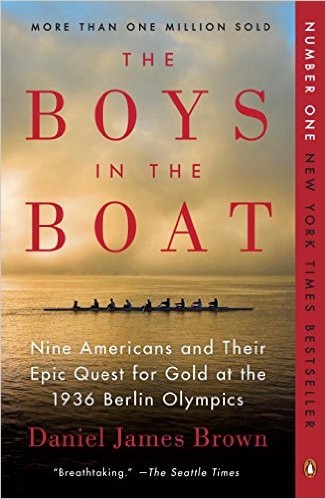Author’s Note: Below is an excerpt from Moving Up the Supply Chain Maturity Curve: The Process Industry Executive Agenda for 2016 and Beyond, a white paper recently published by Elemica with research conducted by Adelante SCM. Although the research focused on the process industry, the content and recommendations we make apply to companies across all industries that want to make their supply chains more flexible and responsive.
 The New York Times best-selling book The Boys in the Boat by Daniel James Brown tells the story of how the University of Washington’s eight-oar crew team overcome great odds and adversity to win the gold medal at the 1936 Olympics in Berlin. If you’re familiar with the sport, you know that the secret to success is getting all eight rowers in the boat perfectly synchronized. If any rower is stroking faster, harder, with less force, or slower than the rest, the boat experiences drag, slows down, and veers off course. But when all eight are in perfect rhythm, the result is almost magical.
The New York Times best-selling book The Boys in the Boat by Daniel James Brown tells the story of how the University of Washington’s eight-oar crew team overcome great odds and adversity to win the gold medal at the 1936 Olympics in Berlin. If you’re familiar with the sport, you know that the secret to success is getting all eight rowers in the boat perfectly synchronized. If any rower is stroking faster, harder, with less force, or slower than the rest, the boat experiences drag, slows down, and veers off course. But when all eight are in perfect rhythm, the result is almost magical.
George Yeoman Pocock, a leading designer and builder of racing shells who built the boat used by the University of Washington team, describes it this way in the book:
“When you get the rhythm in an eight, it’s pure pleasure to be in it. It’s not hard work when the rhythm comes – that ‘swing’ as [rowers] call it. I’ve heard men shriek out with delight when that swing comes in an eight; it’s a thing they’ll never forget as long as they live.”
When it comes to supply chain management, however, many companies are far from achieving that swing. What you find instead are functional groups — such as Manufacturing, Distribution, Sales and Marketing, and Procurement — operating in silos, like a boat full of rowers each doing their own thing. The net result is a supply chain that is slower and less efficient than optimal, a supply chain that requires more time and resources to keep companies on course with their strategic objectives and customer expectations.
Therefore, what you’re more likely to hear from supply chain professionals are shrieks of frustration, not shrieks of joy.
So, how can companies get that “swing” in supply chain management? The answer is simple in concept, but difficult in practice: break down your functional silos, and communicate and collaborate more effectively with your trading partners.
“Break down your functional silos” is not new advice. Analysts, consultants, and others have been telling companies to break down their supply chain functional silos for decades, yet those silos still remain tall and strong at many companies.
How do you successfully align goals, metrics, and resources across functional groups? The answer is well documented and proven: you need a strategic planning and management system, such as the balanced scorecard, that aligns “business activities to the vision and strategy of the organization, improves internal and external communications, and monitors organization performance against strategic goals.”
Having leaders with cross-functional responsibility — such as having Manufacturing, Logistics, and Procurement report to a single executive — also helps to drive alignment.
Which metrics are the right ones? The answer varies by industry and company, but as Rob Handfield, the Bank of America University Distinguished Professor of Supply Chain Management at North Carolina State University, wrote in a blog post last year:
The importance of selecting the right metrics or “measures” as I prefer to call them, is critical as we all know that metrics drive behaviors. Rather than selecting a plethora of meaningless metrics, it is always better to focus on a critical few, and select them wisely.
Handfield outlines several steps companies should take to align their supply chain metrics with their corporate strategy:
- Step 1 – Translate Organizational Objectives Into Supply Chain Metrics
- Step 2 – Develop Metrics and Data Sources
- Step 3 – Develop a Balanced Scorecard
- Step 4 – Establish Measurement Requirements and Owners
- Step 5: Measure Current Performance and Benchmark with Best-in-Class Competitors
Of course, breaking down your internal functional silos is only part of the journey. To achieve that swing in supply chain management, you also need to drive alignment with the other rowers in the boat — namely, your suppliers, customers, logistics service providers, and other external trading partners.
Simply put, the time has come for companies to truly “walk the talk” on collaboration, both across functional groups and across trading partners. If all eight rowers in a boat aren’t aligned and synchronized, it doesn’t matter how expensive or state-of-the-art their boat is — they’ll get left behind by the competition. The same is true for companies. It doesn’t matter how much you spend on technology or other assets and resources; if your functional groups and trading partners are not aligned and synchronized around a shared vision statement and goal (focused on the end customer), then you’ll struggle to keep pace with competitors and customer expectations, and you’ll never cross the finish line first.
Download the white paper for additional insights and recommendations on this topic.









